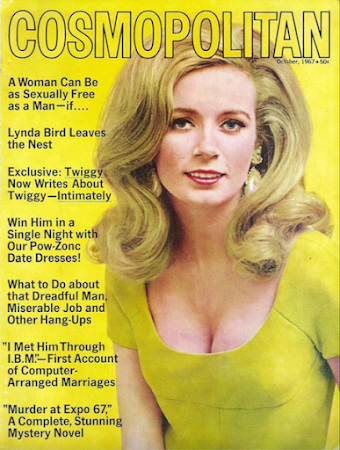The American Baron
James De Mille
New York: Harper & Bros, 1872
144 pages
New York: Harper & Bros, 1872
144 pages
Of all the novels I've read this past year – perhaps the past fifteen years – no line of dialogue has made me laugh so much as this:
That's what they all do, you know, when they save your life. Always! It's awful!"The speaker, Minnie Fay, has come all a fluster to her older sister, the young widow Mrs Willoughby, with news of a marriage proposal from Count Girasole. To this early point in the novel, the nobleman has been depicted as a great hero. In the second chapter, he rescued Minnie from certain death after an avalanche swept her petite form into a deep gorge in the Italian Alps.
Mrs Willoughby – "Kitty" to her family – is taken somewhat aback by the news. She'd noticed the count's interest in Minnie, and so had taken care to keep them apart. It seems her efforts have only been so successful. Says Minnie:
"This dreadful man – the Count, you know – has some wonderful way of finding out where I go; and he keeps all the time appearing and disappearing in the very strangest manner."
Kitty does her best to reassure. If the the count can't be shaken, they'll simply return home to England. It's at this point that Minnie reveals her reason for coming to Italy in the first place. Count Girasole is not the first to save her life. There is another man!
Not only another man, but at least one more! At this point in her young life Minnie has been rescued from certain death on no less than three occasions by no less than three different men. Each was a stranger before the rescue, but all proposed shortly after.
Kitty, by which I mean Mrs Willoughby, hardly knows what to make of it all.
The head spins, all fades to grey, then opens on two gentlemen, Scone Dacres and Lord Hawbury, who are sharing drinks and stories in a Naples apartment. The former has a tale to tell about the day's adventure. He'd rescued a young woman, an "angel child," from certain death at Mount Vesuvius. Now, he wants to marry her. Hawbury understands fully, he was similarly smitten after having once saved a woman from a forest fire whilst hunting outside Ottawa.
Kitty, by which I mean Mrs Willoughby, hardly knows what to make of it all.
The head spins, all fades to grey, then opens on two gentlemen, Scone Dacres and Lord Hawbury, who are sharing drinks and stories in a Naples apartment. The former has a tale to tell about the day's adventure. He'd rescued a young woman, an "angel child," from certain death at Mount Vesuvius. Now, he wants to marry her. Hawbury understands fully, he was similarly smitten after having once saved a woman from a forest fire whilst hunting outside Ottawa.
Minnie Fay is the young woman Dacres rescued, suggesting that he is the fourth man to have done so.
Given her history, I'm betting there are there are others.
By great coincidence, the woman Lord Hawbury rescued in Canada is Miss Ethel Orne, who happens to be Minnie's cousin. He would like to marry her, but has no idea as to her whereabouts. Lord Hawbury himself was once rescued from Indian captivity by an American named Rufus K. Gunn.
There is no suggestion that Rufus K. Gunn wants to marry Lord Hawbury.
We're now well into the novel, and still the titular character has not been revealed. His identity is made known on the the 58th of its double-columned 132 pages. I'm sharing the 59th because it features an illustration.
The American Baron is, of course, a Victorian novel. One expects great coincidences, but not humour of the sort that might resonate today. It brought laughter from beginning to end, most of which was almost certainly intentional.
Rufus K. Gunn is the American baron. He'd rescued Minnie from a shipwreck in the waters of the St Lawrence. A Haliburtan Yankee in nearly every way, he's brash, loud, aggressive, brave, and a bit of an idiot.
Rufus K. Gunn is the American baron. He'd rescued Minnie from a shipwreck in the waters of the St Lawrence. A Haliburtan Yankee in nearly every way, he's brash, loud, aggressive, brave, and a bit of an idiot.
Rufus K. Gunn believes he is Minnie's fiance for no other reason than she's accepted his proposal. But then the same could be said about the Englishman and Count Girasole. Much as he would like, Scone Dacres cannot propose because he has a secret so dark that he has hidden it from his friend Hawbury:
Ten years earlier, a young man just out of Oxford, Dacres met a young woman on a steamer. Her name was Arethusia Wiggins. Her father was a genial gent. Dacres and Arethusia married in South America, honeymooned in Switzerland, then settled in his family home where things soon went sour.
That's gotta hurt.
The couple split. Under the terms of separation, Arethusia received £20,000 (roughly £1,960,000 today), and was obliged to adopt another surname so as not to disgrace the Dacres family. The name she chose is Willoughby.
Mystery arises when Dacres catches sight of Minnie's sister, Mrs Willoughby.
Mrs Willoughby!
Dacres, who doesn't even know her name, is certain that she is his estranged wife. None of this makes any sense. How is it that she does not recognize him? The widow Willoughby's background is nothing like that of Arethusia Wiggins. A right proper lady, she seems the very opposite of a bigamist. Surely, she can't be Arethusia, can she?
There's action and adventure in this novel – Minnie's rescue from the avalanche is only the beginning – but Dacres' delusion is more interesting.
The novel reminds me of nothing so much as fellow Canadian Grant Allen's 1886 novel For Mamie's Sake as a satirical novel centred on a young woman whose innocence and ignorance causes havoc. I'm more partial to the latter because it features assassination by exploding cigar. But if romantic adventure with the threat of brigands is your thing, The American Baron is the novel for you!
The couple split. Under the terms of separation, Arethusia received £20,000 (roughly £1,960,000 today), and was obliged to adopt another surname so as not to disgrace the Dacres family. The name she chose is Willoughby.
Mystery arises when Dacres catches sight of Minnie's sister, Mrs Willoughby.
Mrs Willoughby!
Dacres, who doesn't even know her name, is certain that she is his estranged wife. None of this makes any sense. How is it that she does not recognize him? The widow Willoughby's background is nothing like that of Arethusia Wiggins. A right proper lady, she seems the very opposite of a bigamist. Surely, she can't be Arethusia, can she?
There's action and adventure in this novel – Minnie's rescue from the avalanche is only the beginning – but Dacres' delusion is more interesting.
The novel reminds me of nothing so much as fellow Canadian Grant Allen's 1886 novel For Mamie's Sake as a satirical novel centred on a young woman whose innocence and ignorance causes havoc. I'm more partial to the latter because it features assassination by exploding cigar. But if romantic adventure with the threat of brigands is your thing, The American Baron is the novel for you!
Bloomer:
"Sconey, allow me to inform you that I've always considered you a most infernally handsome man; and what's more, my opinion is worth something, by Jove!"Hereupon Hawbury stretched his head and shoulders back, and pulled away with each hand at his long yellow pendent whiskers. Then he yawned. And then he slowly ejaculated,"By Jove!"
Object: A slim volume bound in dark green boards with gilt lettering. The novel is fine print in double columns with 45 illustrations by William L. Shepard, this being my favourite:
Access: The American Baron novel made its debut in the pages of Harper's (February - December 1871). The book is not at all common, though first editions are cheap. A New Jersey bookseller is offering a Very Good copy at US$50.
You will not regret the purchase.
The American Baron can be read online – here – thanks to the University of Toronto and the Internet Archive.
Related posts:



























